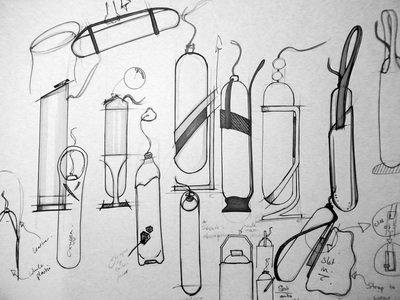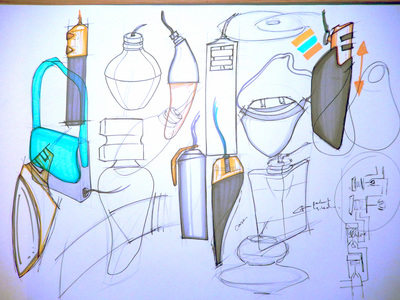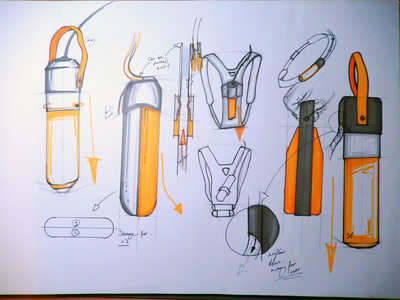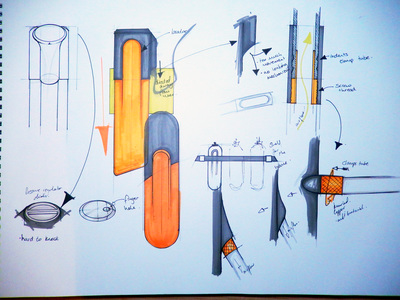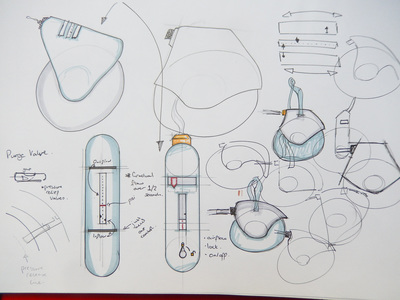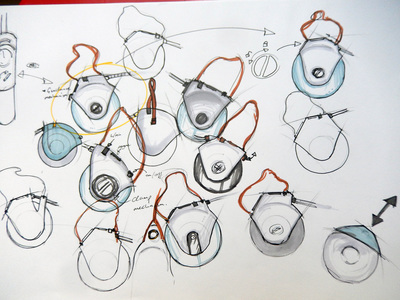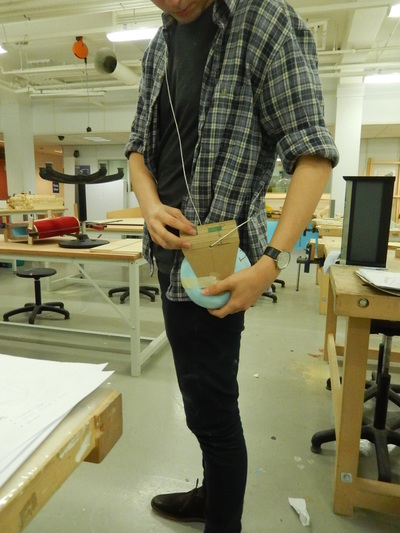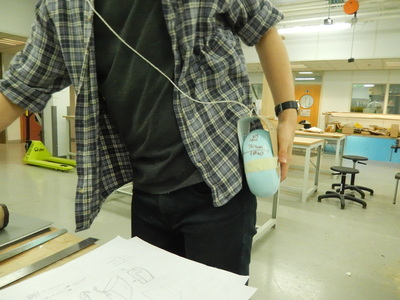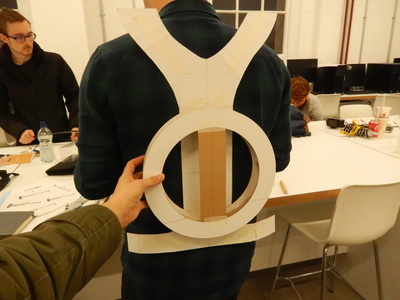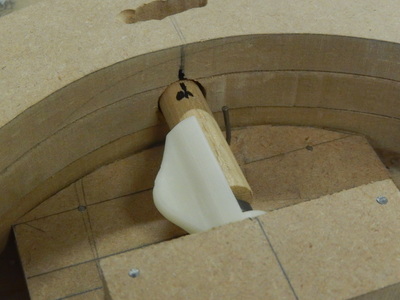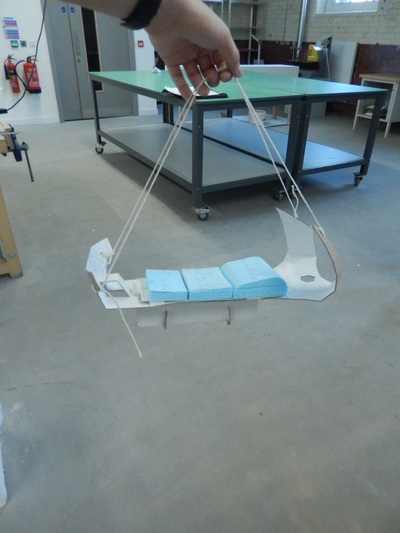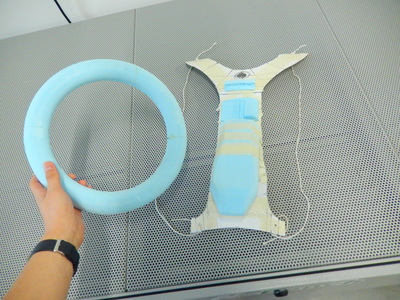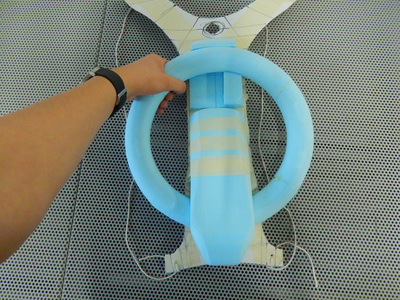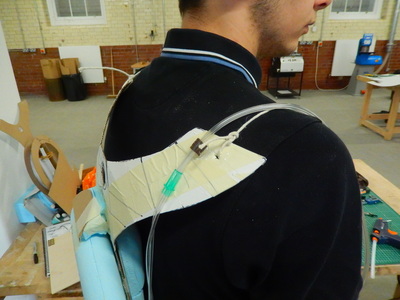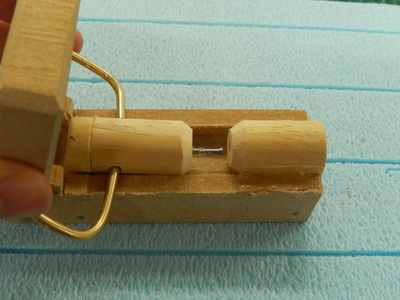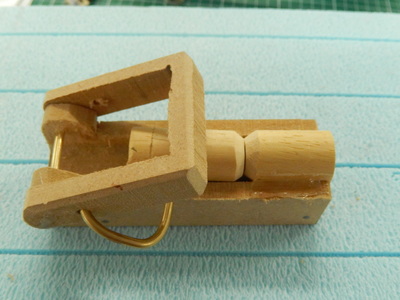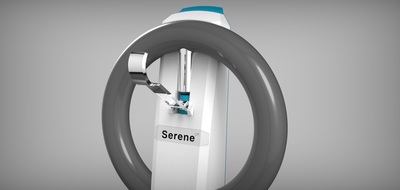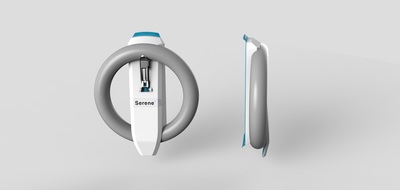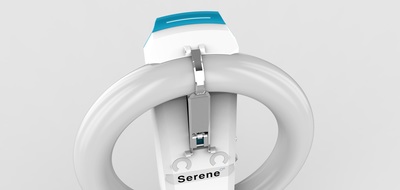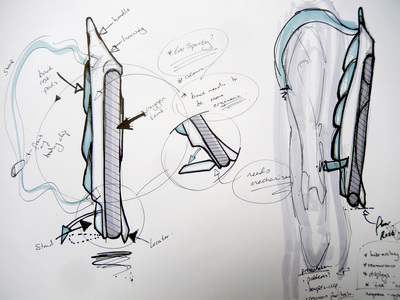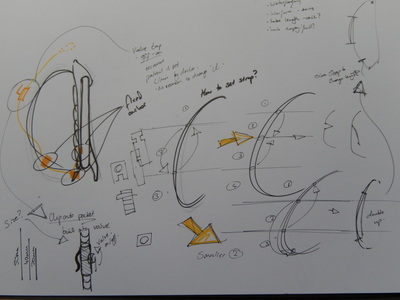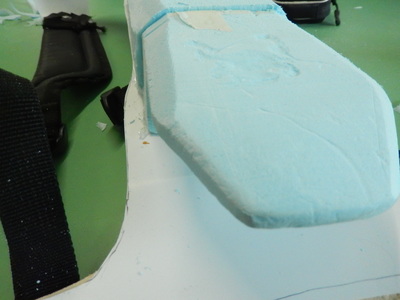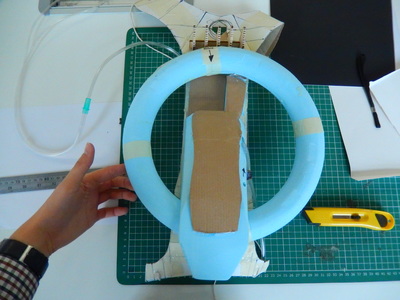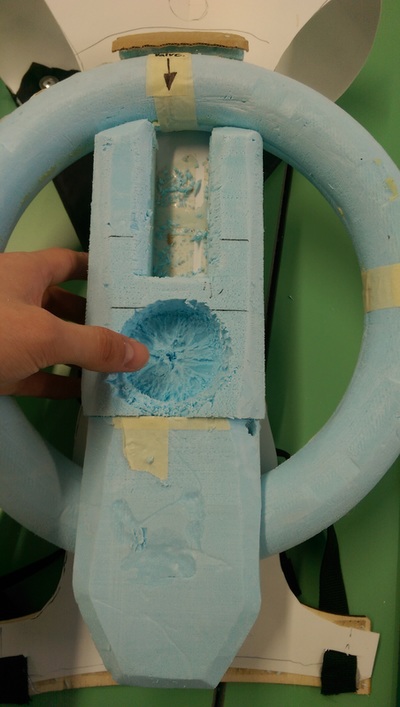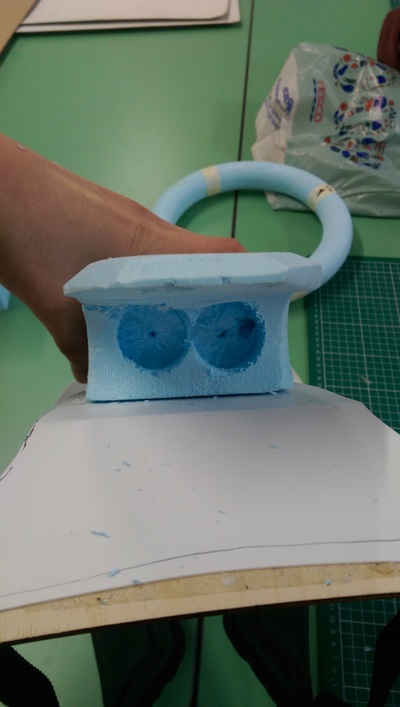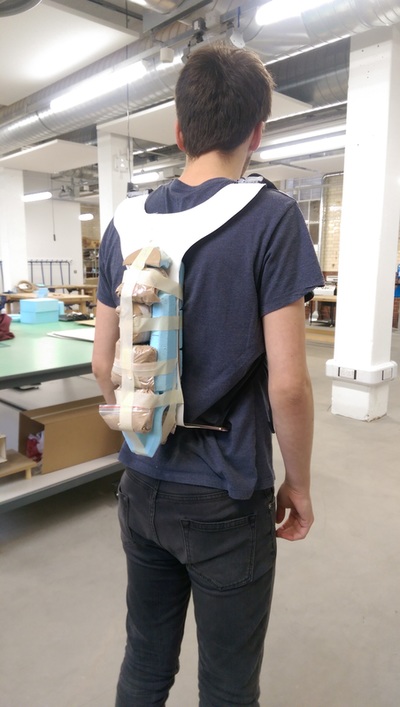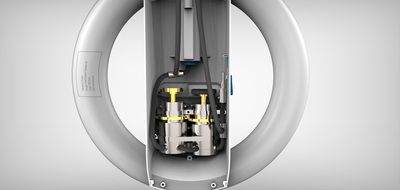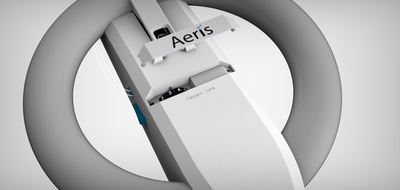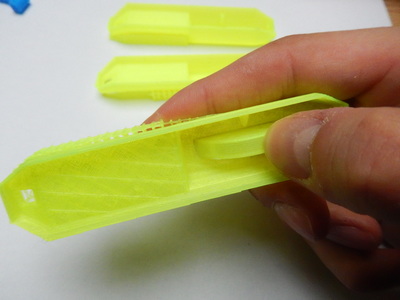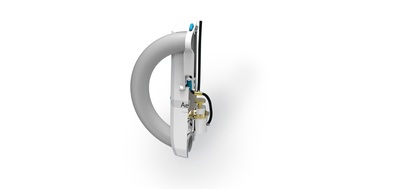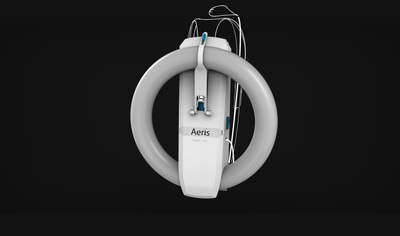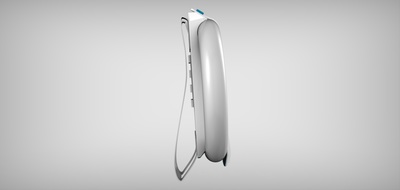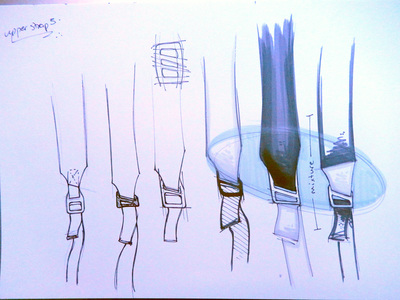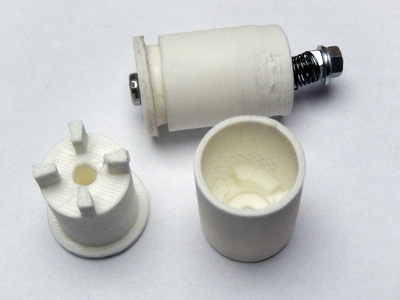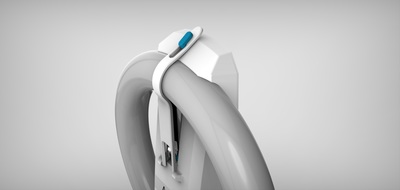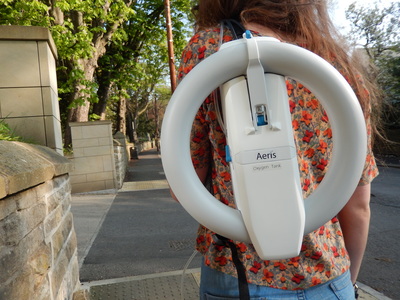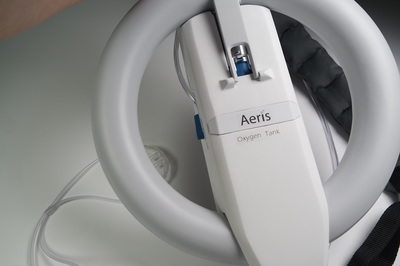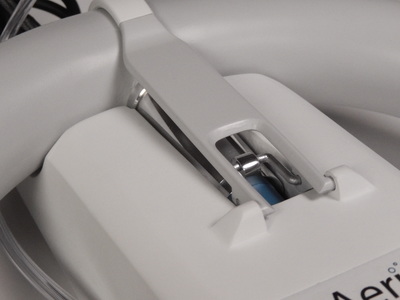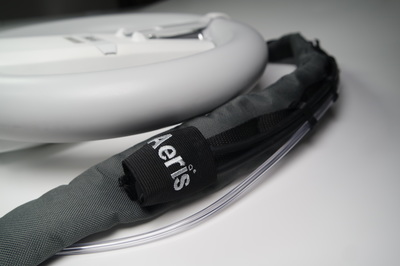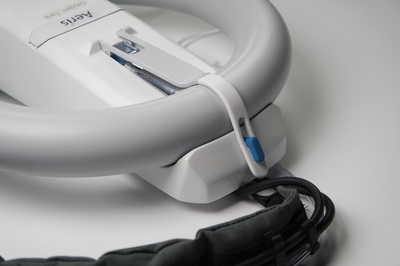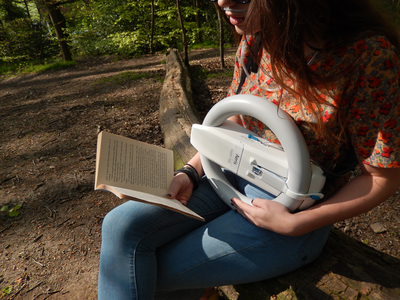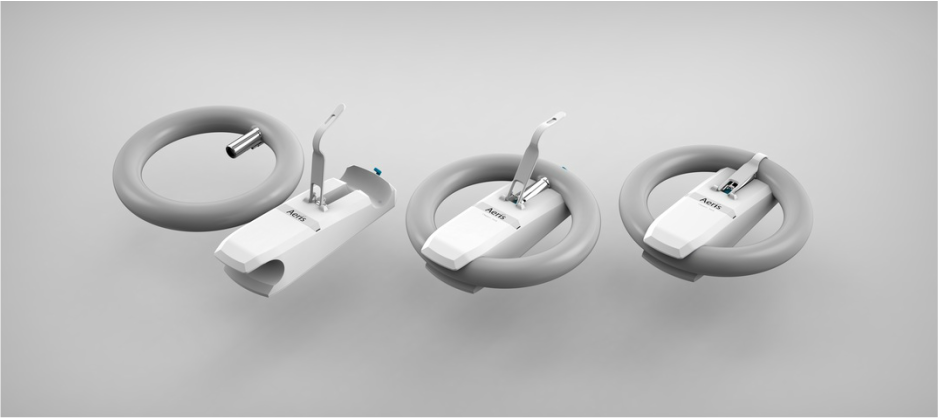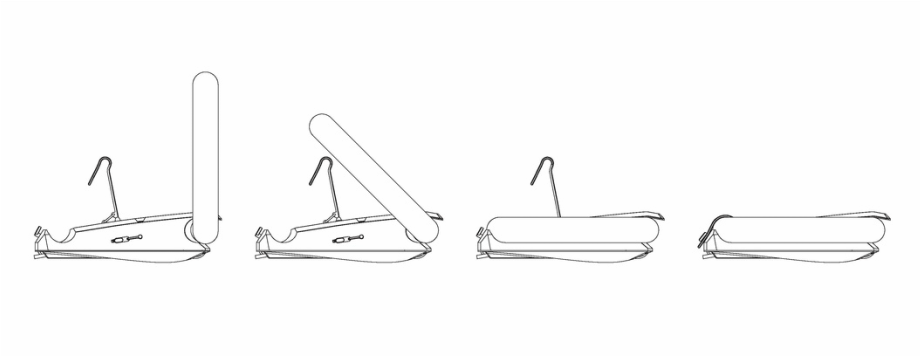The Problem?What started as an inquiry into COPD and home treatment, the Aeris oxygen tank solves many issues surrounding the broader issues of home oxygen therapy, more specifically the need for an ambulatory-or portable-supply of oxygen.
This project challenges the appropriateness of current oxygen therapy equipment on the market, often retrofitted with wheels or placed into a simple material bag in order to facilitate transportation. In actual fact, these approaches fail to address real issues with mobility and stigma, often becoming uncomfortable solutions used due to a lack of alternative.
|
|
|
Development
Initial Concepts
First ideas explored cladding existing oxygen cylinders to improve function and styling. Things quickly progressed to the idea of having a tank and separate module, where the tank could provide exactly 30 minutes of oxygen, for example. Other ideas touched upon a back harness and strap before moving on to the use of a toroidal-or donut like-tank that could be worn by the side like a satchel.
Models & Testing
The satchel was modelled, however it was felt that there was more opportunity combining the previous idea of a back harness with a larger toroidal tank that could be worn on the back, thus development continued from here.
Mechanisms were tested to explore ways of engaging the toroidal tank onto the back module, such as twisting it into place and rotating a lever around the valve to engage the oxygen supply and lock the tank into place, all in one go. More accurate blue foam models were made and tried with contoured back padding and oxygen lines to understand the interface between product and user when worn. Testing ensures sufficient range of motion for the arms with the tank on the back.
Mechanisms were tested to explore ways of engaging the toroidal tank onto the back module, such as twisting it into place and rotating a lever around the valve to engage the oxygen supply and lock the tank into place, all in one go. More accurate blue foam models were made and tried with contoured back padding and oxygen lines to understand the interface between product and user when worn. Testing ensures sufficient range of motion for the arms with the tank on the back.
Further refinement
A new over centre valve mechanism was tested to simplify the interaction, this would engage the tank and lock it all in one motion and seemed to create a cleaner and less cluttered look too. The Solidworks model further validated this principle as it worked in the software too. This was inspired by research into existing mechanisms. Various clasps were modelled too (seen in chrome).
Sketch work and further modelling explored form, function and controls.
Sketch work and further modelling explored form, function and controls.
CAD & Straps
CAD was used to quickly validate the project in terms of components, ensuring that specified components could fit inside. These two cylindrical components inside were the two pressure regulators, used to bring the tank pressure down in two stages to ensure a more consistent output pressure (avoiding oxygen spikes as the tank emptied). Flexible tubing was needed to ensure the valve lever could work and move in relation to the static internal components. The panel (image 2) moves away to expose a dial that can change the litres/min of oxygen provided to the user when it occasionally needs changing. The panel generally prevents tampering whilst it is on the users back.
Physical testing was carried out through this process. Straps and the harness was considered along with a method of securing the tank in place with a flexible strap overmolded onto the lever and secured with an arm that clicks into place as it rotates over it.
Physical testing was carried out through this process. Straps and the harness was considered along with a method of securing the tank in place with a flexible strap overmolded onto the lever and secured with an arm that clicks into place as it rotates over it.
Aeris
Aeris can be worn over the shoulder, over one arm and be held on the lap. This makes it ideal for short walks, longer trips such as shopping or walking a child to school, and sitting on public transport or in a car. The aesthetic aims to be more visually sensitive than industrial looking tanks provided currently, however a hint of metal is seen to communicate a high quality and spec.
See captions for further details.
See captions for further details.
